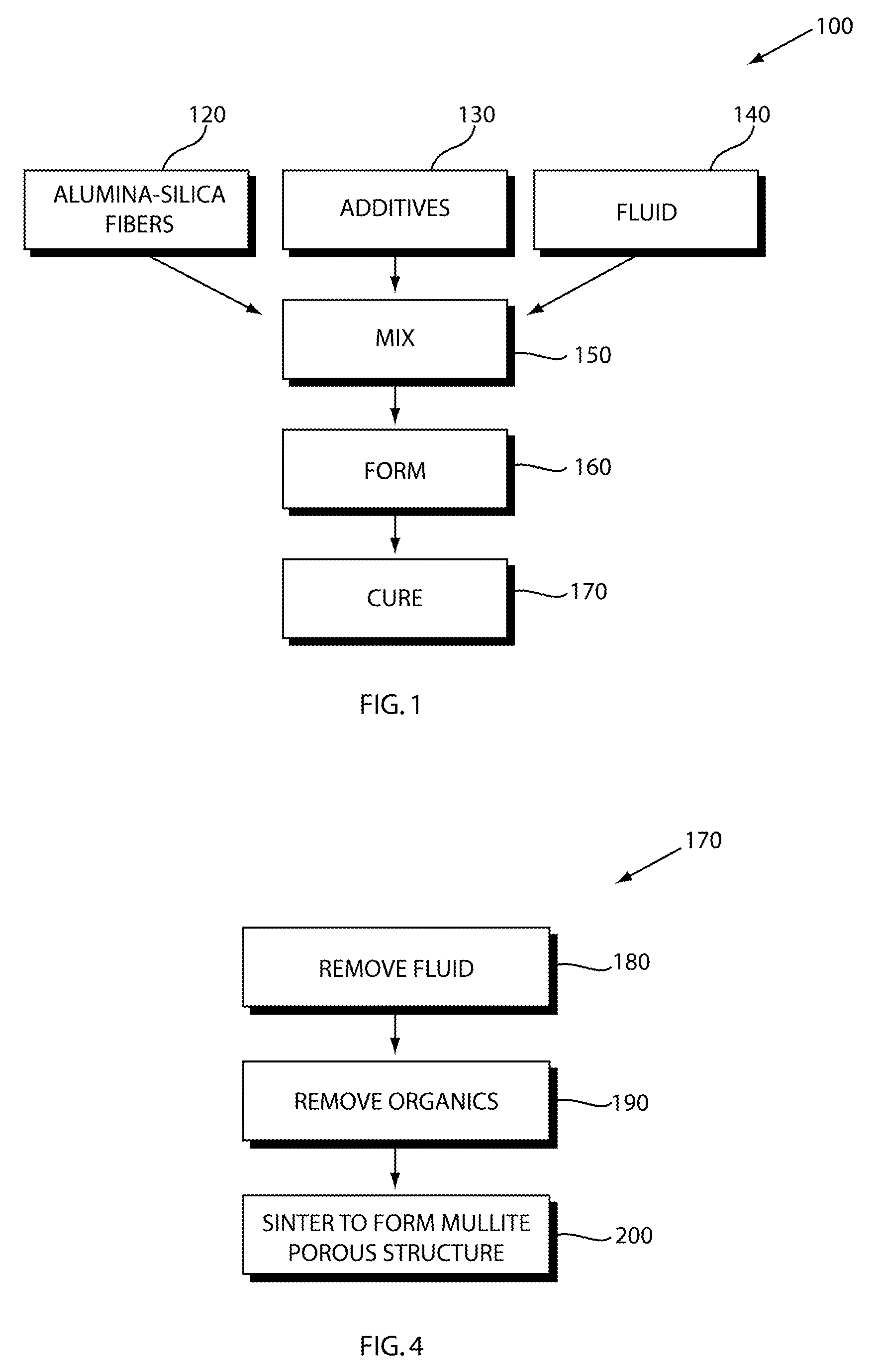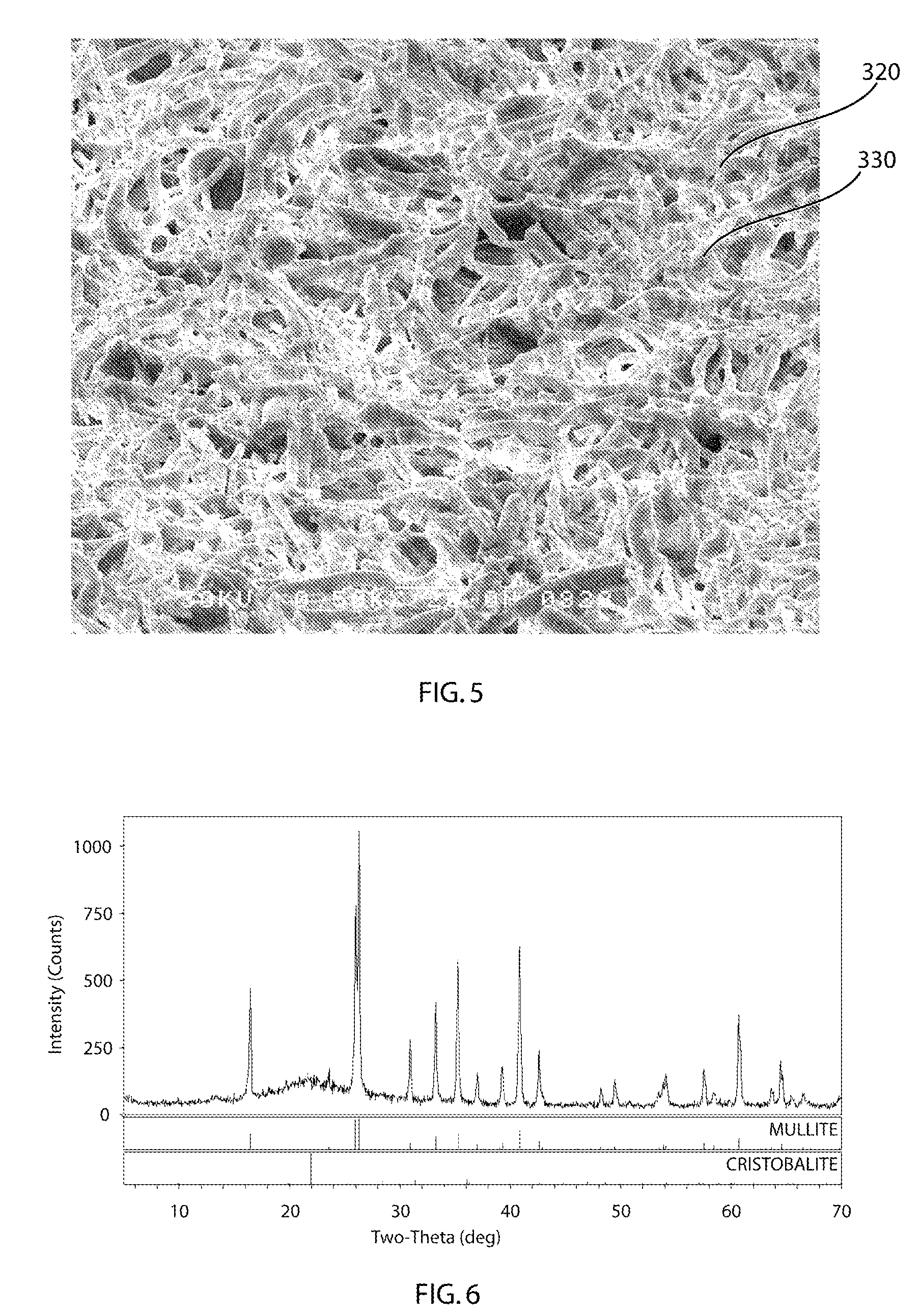Fiber-Based Ceramic Substrate and Method of Fabricating the Same
a fiber-based ceramic and substrate technology, applied in the field of fiber-based ceramic substrates, can solve the problems of high temperature, high cost of ceramic fibers, and low cost of aluminosilicate-based substrates such as vitreous aluminosilicate, and achieve the effect of not being associated with high performan
- Summary
- Abstract
- Description
- Claims
- Application Information
AI Technical Summary
Benefits of technology
Problems solved by technology
Method used
Image
Examples
Embodiment Construction
[0018]Detailed descriptions of examples of the invention are provided herein. It is to be understood, however, that the present invention may be exemplified in various forms. Therefore, the specific details disclosed herein are not to be interpreted as limiting, but rather as a representative basis for teaching one skilled in the art how to employ the present invention in virtually any detailed system, structure, or manner.
[0019]Ceramic fiber-based substrate materials are useful for high temperature insulation, filtration, and for hosting catalytic reactions. The materials, in any of a variety of forms, can be used in high temperature applications as catalytic converters, NOx adsorbers, DeNox filters, multi-function filters, molten metal transport mechanisms and filters, regenerator cores, chemical processes, fixed-bed reactors, hydrodesulfurization, hydrocracking or hydrotreating, and engine exhaust filtration.
[0020]The high porosity, and high effective surface area provided by the...
PUM
| Property | Measurement | Unit |
|---|---|---|
| temperature | aaaaa | aaaaa |
| temperatures | aaaaa | aaaaa |
| temperatures | aaaaa | aaaaa |
Abstract
Description
Claims
Application Information
 Login to View More
Login to View More - R&D
- Intellectual Property
- Life Sciences
- Materials
- Tech Scout
- Unparalleled Data Quality
- Higher Quality Content
- 60% Fewer Hallucinations
Browse by: Latest US Patents, China's latest patents, Technical Efficacy Thesaurus, Application Domain, Technology Topic, Popular Technical Reports.
© 2025 PatSnap. All rights reserved.Legal|Privacy policy|Modern Slavery Act Transparency Statement|Sitemap|About US| Contact US: help@patsnap.com



